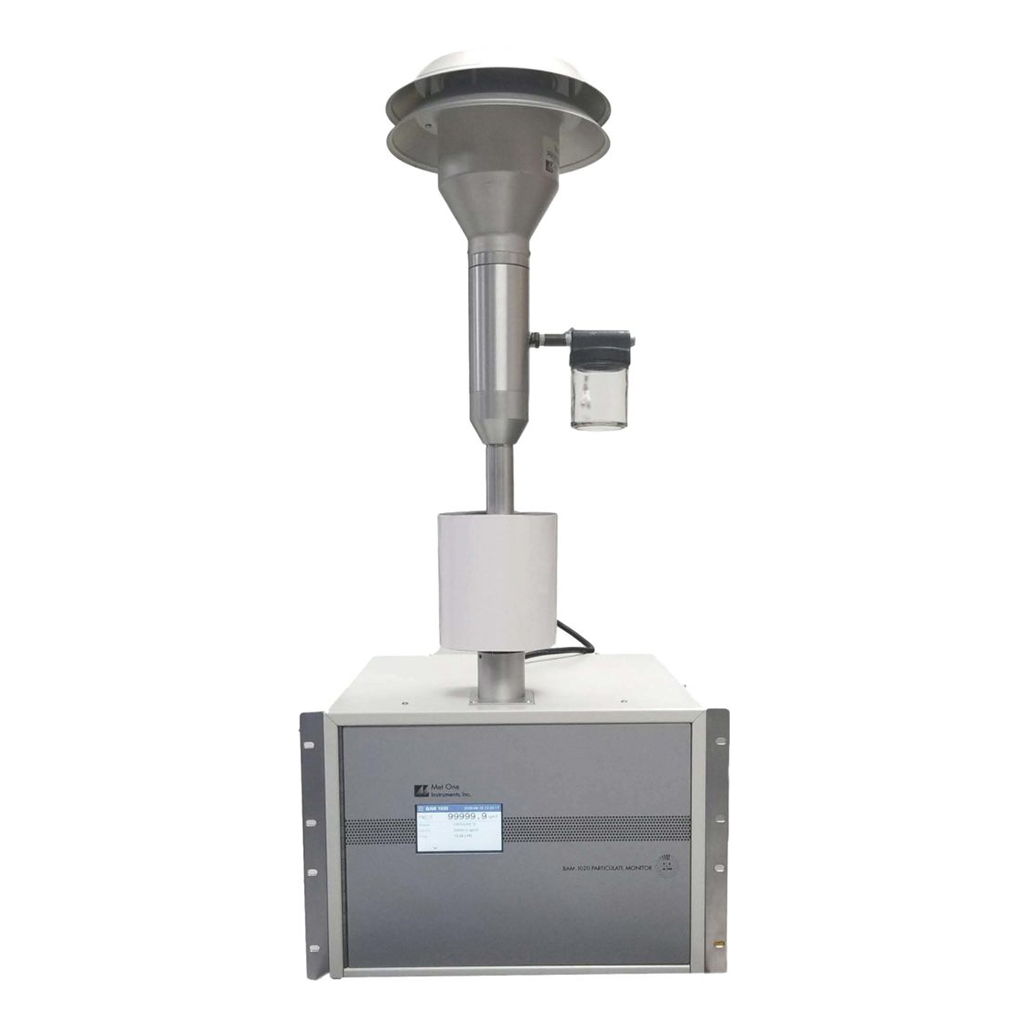The BAM 1020 is a widely used air monitoring platform that automatically measures and records airborne particulate concentration levels using beta ray attenuation. The unit has obtained U.S. EPA Federal Equivalent Method (FEM) designation for continuous PM2.5 monitoring, as well as PM10 monitoring, and corresponding PM2.5 and PM10 certifications in the European Union. Two BAM 1020 units can be operated together as an EPA designated PM10-2.5 coarse method.
During each sample hour, a small 14C source emits high-energy electrons (beta rays) through a clean filter tape, which are then detected and counted by a sensitive scintillation detector to determine a zero reading. The BAM 1020 advances the tape to the sample nozzle, where a vacuum pump pulls a measured and controlled amount of outside air through the filter tape, loading it with ambient dust. At the end of the hour, the dust spot is placed back between the beta source and the detector, causing attenuation of the beta ray signal that is used to determine the mass of the particulate matter on the filter tape. This mass is used to calculate the volumetric concentration of particulate matter in ambient air.
The data collected by the BAM 1020 is accessible through an industry standard duplex RS-232 serial port using common terminal programs or Met One Instruments’ software, such as Air Plus or Comet. Data is available in various formats, including daily reports, last record, all data, and new records since last download. Configuration files, error logs, and flow statistics are also available. The unit has low operating costs, automatic span calibration checks, and can operate unattended for up to 60 days between site visits. The BAM 1020 has highly accurate, reliable, and mechanically simple flow systems, and its hourly filter advances minimize effects on volatile compounds.

